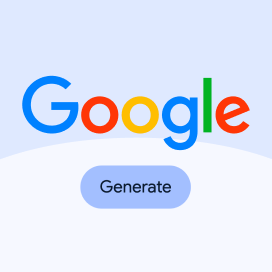Written by Aurora Maciá
Index
- SEO, a key online marketing strategy
- SEO is marketing: know your potential customer, who he/she is, what he/she needs and how he/she will search for it on the Internet.
- SEO, a key factor in the definition of information architecture
- SEO helps you define your content marketing strategy
- How can SEO and AdWords complement each other?
Last October took place The Digital Change conference, held by KSchool, the first of a series of events that seek to bring together industry professionals and teachers of the school with students and attendees in general. Fernando Maciá, director of Human Level Communications and professor in several KSchool master programs, traveled to Barcelona to talk about the importance of SEO in online marketing.
SEO, a key online marketing strategy
Fernando begins the presentation by highlighting the two key points in which a website “plays” when it comes to generating profitability: the attraction of traffic and the conversion of that traffic (the relationship between all the visitors to my website and those who complete a goal).
Regarding how to attract users to our website, Fernando points to Google and other search engines as the main distributors of online traffic, as they anticipate what we want to search for and return increasingly personalized results.
On the other hand, it is not enough to have usable (i.e. user-friendly) web pages, they must also be indexable (search engine friendly). Although at the beginning we have to invest a larger amount of money to attract traffic to our website (paid media), in the end the own and earned media, with SEO as the protagonist, will lower the acquisition cost of each visit.
When the customer is looking for you, selling is much easier. Your job would boil down to being there when the customer needs you, studying how users search for you to make sure you show up in the results. That’s what SEO is for. SEO is the digital marketing strategy with the lowest acquisition cost and is also the least intrusive, as it requires the user to take the first step.
SEO is marketing: know your potential customer, who he/she is, what he/she needs and how he/she will search for it on the Internet.
SEO aims to appear in all phases of the conversion funnel: inspiration, research, consideration, conversion and evangelization. However, the decision process is not a linear process: many options are compared and different opinions are sought by going through different sites in what is now called “the customer journey”.
Therefore, you have to study that journey and try to answer questions such as “what does my customer like?” or “what makes him hesitate?” to try to guide the user without losing him along the way. This shows us that SEO is marketing, since it analyzes the target, studies what it likes and uses purchase arguments that connect with the user’s purchase motivations.
SEO, a key factor in the definition of information architecture
By analyzing the search patterns of a product and the features that are associated with it, SEO shows us how we should structure our website into different product families and subdivisions to make the page user-friendly.
In the same way, by identifying the words and expressions related to our product that have a higher search potential, we will be able to know which products to place in the first levels (for example, in the Home page) and which to place in the deeper levels (more clicks away).
SEO helps you define your content marketing strategy
Throughout the purchase decision process, we have to answer questions that translate into searches. By studying the buyer’s journey and those questions/searches, we can anticipate the type of content that should appear on our website. If, for example, there is no direct conversion (i.e. the customer does not enter the website and buy the first product he sees), we will have to offer content that convinces the buyer that this product, or some other, is worth buying. This content should answer the questions or doubts that may have arisen to the customer and that have caused him not to buy the product “at the first time”. In this way, we can manage to redirect the user to the conversion funnel each time.
Fernando shows some examples of the type of content that works best for each type of product: videos for travel companies, forums for technology companies, etc.
The use of social networks can also be vital to generate engagement, to create a community that generates affinity, resulting in more visits.
How can SEO and AdWords complement each other?
SEO works in conjunction with AdWords to better understand customer searches. AdWords allows us to know which expressions are more sensitive and thus, for example, to see if “3×2” has a higher search potential than “on offer”. It also helps us to identify the best landings and complements SEO to achieve greater visibility for the page. On the other hand, it also tells us which competitive advantage the audience is more sensitive to, perhaps customers are more interested in free shipping than 3×2. In this way, our ads will pick up these buying motivations and use these keywords to attract as much traffic as possible. Finally, SEO will make our cost of acquisition much lower.
To conclude, the director of Human Level points out that being an SEO today can be compared to being a creative in the advertising agencies of the 1950s. Fernando, a fan of the Mad Men series, throws out a fun question to the audience, “Do you have what it takes to be the Don Draper of the digital age?”



